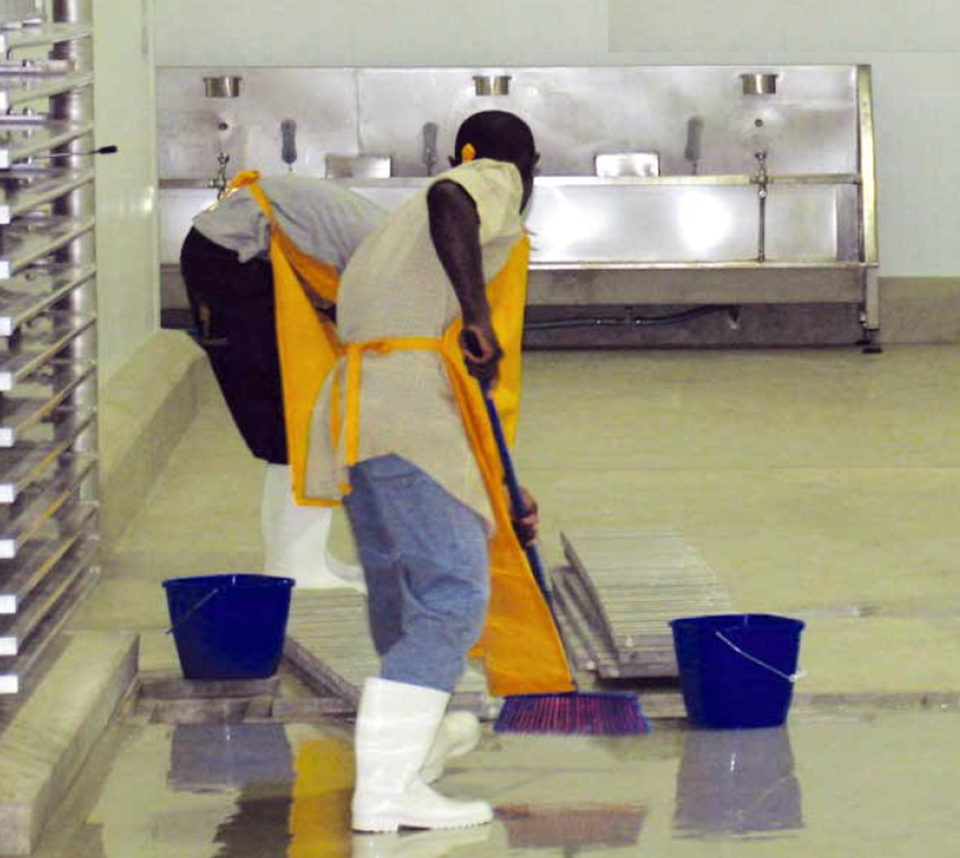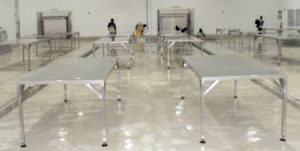Procedural details

A total procedures manual is evidence of a processor’s firm commitment to quality. Although not required by the U.S. Food and Drug Administration (FDA) or the European Commission, detailing exact procedures and specifications for every stage of production and processing is an indication of attention to detail that is the hallmark of quality production.
As outlined in the April 2005 Global Aquaculture Advocate, the first steps toward drafting a total procedures manual include physical descriptions of the plant, grounds, and any other areas related to food processing. A current organization chart showing all positions and reporting and supervisory roles must be drawn up. Accurate descriptions that identify all job responsibilities for every position at the processing plant are also needed.
Good manufacturing practices
Once these first steps have been concluded, the processor should consider all of the processing actions that take place on the floor of the processing plant, especially those that affect the quality and safety of seafood production. All processors are enjoined to follow good manufacturing practices as outlined in Chapter 21 of the United States Code of Federal Regulations, Part 110 (21CFR110).
But 21CFR110 is only a broad policy outline that does not specify individual procedures for good management practices at the processing level. All processing plants must operate within such policies, but are given ample scope to implement plant-specific procedures.
For example, the regulation states: “Mechanical manufacturing steps such as washing, peeling, trimming, cutting, sorting, and inspecting … shall be performed so as to protect food against contamination. Compliance with this requirement may be accomplished by providing adequate physical protection of food from contaminants that may drip, drain, or be drawn into the food. Protection may be provided by adequate cleaning and sanitizing of all food-contact surfaces, and by using time and temperature controls at and between each manufacturing step.”
The code does not give specific procedures for washing, peeling, or protecting the food in question. Policy, not procedure, is found in 21CFR110.
Identifying procedures
When writing a total procedures manual, it is up to the processor to identify exactly what procedures implemented at the plant carry out the policy of providing wholesome food to consumers. The identified procedures should cover all the actions that take place in the processing plant and mesh seamlessly with the previously written position and job descriptions.
The tasks described in the procedures manual must fit the job responsibilities part of the manual. If tasks and responsibilities don’t match job descriptions, edits should be made to ensure that the procedures and job responsibilities are in perfect accord. The same is true for reporting responsibilities. Many times what management thinks is happening on the floor is not quite true. This is a golden opportunity to review efficiency, food sanitation controls, and HACCP procedures.
It is extremely helpful to “divide and conquer” when writing procedures. Since almost all processors have HACCP plans, they can reference the process flow chart or list of control points and write up procedures based on each processing step: reception (or preinspection if there is a previous step), washing, classification, value-adding, weighing, etc.
Procedures for reception
Next, the processor should add all the actions that are carried out at each step. These procedures identify many more details than are discussed in good manufacturing practices. Management should write out all the actions that occur at each step in the process flow chart. This kind of attention to detail is an opportunity to identify problems in processing, perhaps bringing to light procedural issues that were previously unknown.
Reinforcing HACCP
Procedures should also reinforce the HACCP plan and all monitoring components. As in the example, these procedures include monitoring actions that are rightfully part of the HACCP plan. HACCP and procedures must be fully integrated for an effective plan, and including all HACCP actions in a step-bystep procedures manual is a byproduct of this total integration.
At the very least, a total procedures manual should detail the major actions that take place at each process step. For any HACCP-related actions, the procedures should be extremely specific, echoing the HACCP plan for monitoring and corrective actions. It is extremely helpful to number or name the monitoring documents for HACCP, sanitation control and quality control, and refer to them in the procedures manual.
Sanitation procedures

Written sanitation standard operating procedures (SSOPs) are already mandatory for processing plants. U.S. federal regulation 21CFR123.11 requires written procedures as well as monitoring for all actions that guarantee the efficacy of eight different areas of food sanitation from water quality to pest exclusion. When writing up a total procedures manual, include a separate section that incorporates the already drafted SSOPs.
Processors should also review these procedures to ensure they are detailed enough to serve as a manual for anyone who doesn’t already know the process. The same is true for all the procedures related to GMPs and food handling at the plant. Management should review all procedures for accuracy with the help of representatives who actually do the work on the plant floor.
The procedures manual should also list all the pertinent documents that are used during processing, and where they can be found. Some might be filed in the quality control office or with HACCP documents, while others relating to employee health and/or training might be found in the human resources office. A “map” of where important monitoring and verification documents can be found is invaluable during an audit.
Once these steps are achieved, processors should turn their attention to the other sections of t7he processing plant: laboratory, maintenance, administration, etc. Farm production, larval production, and security units will also require procedural documentation. Clearly these must be written with the participation of section heads and their crews.
After these procedures are completed, the processor should consider the procedures needed to adequately safeguard consumers from bioterrorism through physical security and inspections. More on this topic will come next issue.
Note: The author is an accredited Aquaculture Certification Council, Inc. certifier and author of HACCP and the Shrimp Farm, A Manual for Shrimp Farmers.
(Editor’s Note: This article was originally published in the June 2005 print edition of the Global Aquaculture Advocate.)
Now that you've finished reading the article ...
… we hope you’ll consider supporting our mission to document the evolution of the global aquaculture industry and share our vast network of contributors’ expansive knowledge every week.
By becoming a Global Seafood Alliance member, you’re ensuring that all of the pre-competitive work we do through member benefits, resources and events can continue. Individual membership costs just $50 a year. GSA individual and corporate members receive complimentary access to a series of GOAL virtual events beginning in April. Join now.
Not a GSA member? Join us.
Author
Tagged With
Related Posts

Responsibility
Beyond HACCP: Total procedures manuals, Part 1
Seafood processors must increasingly codify all procedures, not just those related to food safety and hazard analysis critical control point (HACCP).

Intelligence
HACCP programs control antibiotic residues, other risks in aquaculture
Based on seven basic principles, HACCP plans identify critical control points and critical limits, and establish monitoring methods, record-keeping procedures and appropriate corrective actions.

Responsibility
Beyond HACCP: Total procedures manuals, Part 3
Processors maintain facility and product security via HACCP procedures and supporting documentation that control physical security, employees and visitors.

Intelligence
4-hexylresorcinol: sulfite-free control for melanosis in crustaceans
4-hexylresorcinol in a nonsulfite processing treatment against melanosis in crustaceans inhibits natural enzymes for shell hardening.


